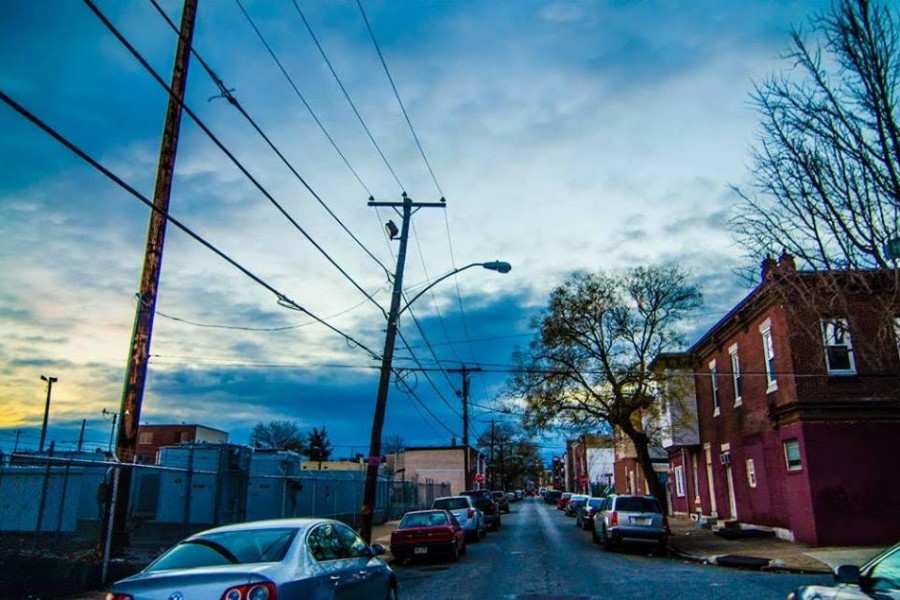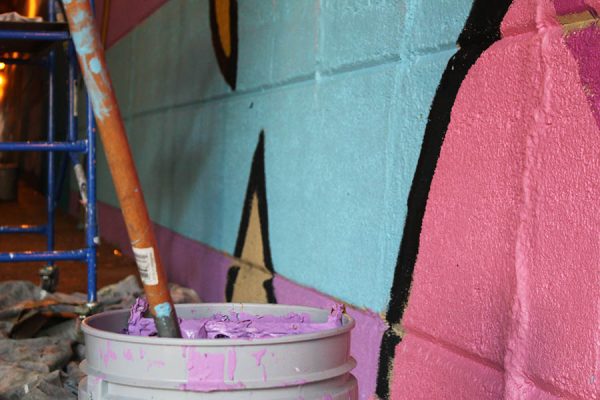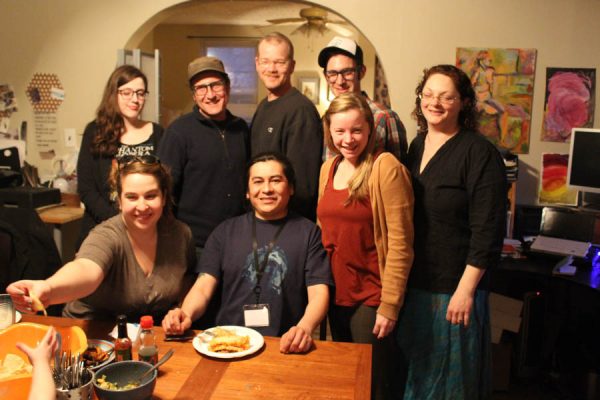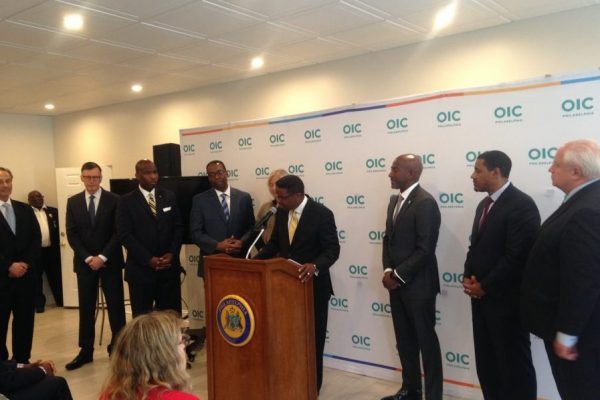Gentrify Me: The History of Homes, Hipsters, and High-Priced Real Estate in The Riverwards (Part One)
It’s time to discuss something a little touchy: Gentrification.
You’ve undeniably heard this word thrown around in the media, at neighborhood meetings and at local watering holes. But what does gentrification really mean?
Gentrification is a loaded word and often is used when another term would better reflect the attitude intended. The term is derived from “the gentry,” the landed or well-off class. Generally, it’s the gradual migration of higher-income residents into low-income neighborhoods. It’s a process involving many isolated changes to a neighborhood over time. Now, when a company buys, razes and rebuilds whole city blocks, this is redevelopment. When you’re walking through a historically working-class neighborhood, where leisure traditionally meant a can of domestic beer on your front step in the evening, and you see a sign for a canine yoga studio next to Captain Hop Neckbeard’s Craft Beer Supply, and then notice a “For Rent” sign on an industrial ruin of a warehouse across the street, that advertises loft apartments for $2000 a month, then you’ve seen gentrification.
This is a three-part exploration of gentrification in the Riverwards. This week, welcome the story of what was: The Ghost of Gentrification-Past. We’ll look among the ruins and risen of the past several decades in Philly, from the first move to gentrify in the 1960s in the vicinity of Center City, through the deindustrialization of Northern Liberties in the 1980s and 90s, up to the last five years or so of residential expansion and exponential property valuation in Fishtown and Port Richmond.
The warehouse hipster-pads renting for $2000 reveals what is at the core of the controversy over gentrification—a rise in housing prices displacing the original residents. Land value and an increase in the assessed tax liability prevent low-income immigration, and literally price multi-generation residents out of their own homes. This occurs when property taxes double, even triple, to match soaring home prices over the course of a few years. Homes are then subject to seizure by the City upon failure to pay the higher taxes. The urban refugees are forced to seek asylum in crumbling quarters already saturated with poverty.
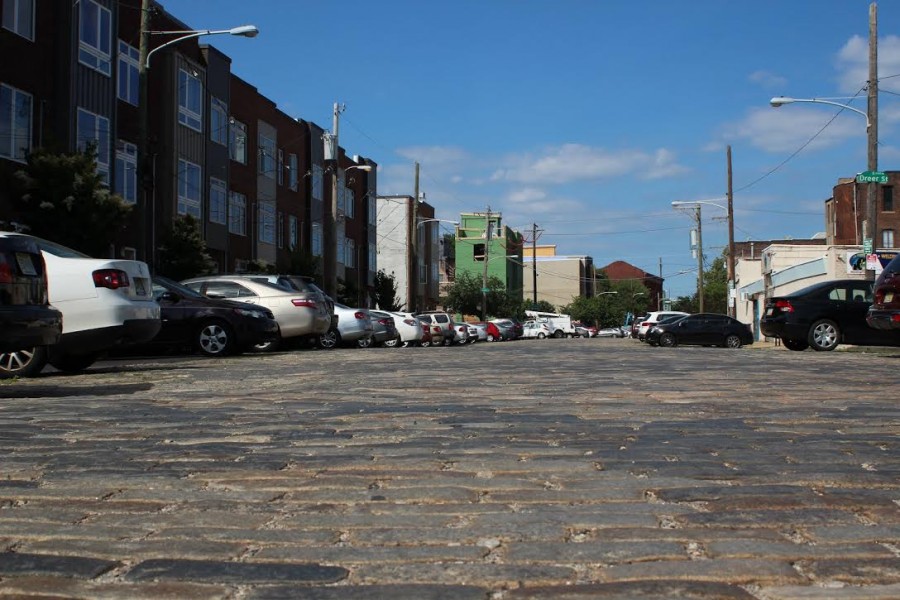
Cobblestone: Trenton Avenue in East Kensington, one of the most gentrifying areas of the Riverwards. Photo: Kenneth Lip
The process starts with individual urban home-buyers or business people venturing into low-income, “blighted,” neighborhoods to take advantage of low home prices. These middle class or professional class residents then install amenities to which they are culturally accustomed— things like dog parks, wine bars, and so on—which attract more of their peers. All of these people spend money in the neighborhood at stores that recently opened to cater to their tastes. The area has now become attractive to large developers, who love to make money, and move quickly to purchase land in newly gentrifying tracts. They sometimes “squat” on the property without development for decades, in order to cash-in exponentially once the land market in the area has fully matured. Developers may deliberately allow blight to continue in order to suppress property values until the timing to build or sell is most profitable. Enterprise on the part of young home-buyers quickly becomes land speculation by huge corporations.
It might be tempting to leave the homeowners, who did nothing to counter decades of downturn and blight in their neighborhoods, to the mercy of market forces. But it was not neglect by the owner-occupants—who remained rooted among the acres of vacant industrial buildings, perhaps living in the lone occupied dwelling in a block of vacant rowhomes, an island of curtains and electric glow in a sea of condemnation notices and hammered-up plywood—that brought our former urban workshops and industrial hubs to such a squalid state.
Suburbs that were seeded as escapes for Philly’s gentry of the late 1800s and early 1900s exploded in population during the post-World War II baby boom and grew still more in the aftermath of racial desegregation and “White Flight” from urban areas. Philly’s suburbs overcame the city in population by the 1960s, and those remaining in the partial vacuum suffered under massive decline in public services and quality of life. The poorest, mostly minority residents of the inner city made for a catastrophically shrunken tax base, who could not afford to independently fight against or flee the decay around them.
From 1970 to 1990, Philadelphia lost more than 18 percent of its residents. Manufacturing all but disappeared as the 350,000 manufacturing jobs in 1950 decreased to 31,000 by 2005.
Local politicians and business leaders undertook various projects with agencies like the Philadelphia Redevelopment Authority and the Old Philadelphia Development Corporation to attract middle-class residents back to Center City.
Cities implemented gentrification codes which forced long-time residents out of homes they could not afford to renovate to comply with “gentrified” standards. This was the case in Society Hill, which had fallen into such disrepair and infamy by the late 1940s that it had earned the name “The Bloody Fifth Ward.”
New residents were incentivized by generous mortgages and required to abide by strict “historically authentic” design guidelines. But historical features were sacrificed in the name of development, as the City Planning Commission called for the elimination of blighted late 19th century buildings and retail establishments. The Dock Street Market, the city’s main food market since the late 18th century, was razed to make way for the three Brutalist Society Hill towers.
Unable to pay to upgrade their homes, long-term residents—many African American—were forced to sell their historic properties. Property values rose 250 percent through the 70s, and the non-white population of the community fell from 20 percent to 7 percent.
In another part of the Philadelphia, a honeymoon between mostly white, middle-class newcomers and long-time Jewish, Polish, and Black residents of Queen Village did not last long past their successful coupling to prevent their neighborhood from being ghettoized by the proposed Crosstown Expressway. Over the course of a decade, real estate taxes tripled, and an abandoned rowhouse that may have cost the former resident $300 in the mid-1960s might fetch 10,000 times that price by the end of the next decade. The African American population was cut to one-tenth the 1970 level by the year 2010 to just 5 percent.
Since 2000, the largest contiguous area of gentrifying tracts, according to a 2013 survey by Governing Magazine, was from roughly Spring Garden at 4th Street, northeast through Northern Liberties, Kensington, Fishtown, and Port Richmond, all along Delaware Avenue to Castor, with the notable absence of areas north of Aramingo Avenue.
Neighborhoods adjacent to local universities have also seen large-scale gentrification in the same time period, particularly in West Philly where both UPenn and Drexel have influenced a rise in property values. This occurred both through their importation of tens of thousands of mostly middle-class young people to the area and via institutional programs specifically targeted at analyzing and spurring redevelopment, as in Mantua. All of these geographies’ transformations have had common elements, but the investment in the Riverwards has been funded more often by private developers and non-profit development corporations.
Northern Liberties, notoriously gentrified, has been almost entirely re-colonized with college-age and young professional white people and their infinite boutique culture. East of Frankford Avenue from Fairmount to Port Richmond is now on the sunset side of gentrification, along with much of South Kensington. Other areas of Kensington, especially between Trenton Avenue and Front Street, are showing signs of economic renewal as well.
The middle class pioneers who are the first to settle blighted neighborhoods and begin the gentrification process are often referred to as “marginal gentrifiers,” because this first wave of migrants is often forgotten and themselves displaced by the later-coming, large-scale developers.
Godfather developers often emerge and become synonymous with the rebuilding of a neighborhood or the fight against it. Ori Feibush is a Balkanizing real estate figure in the 2nd Council District of South Philly for his attempts to “class up” Point Breeze. The edifice of Northern Liberties is in many facets the vision of Bart Blatstein, whose Tower Investments acquired the former Schmidt’s Brewery site at a Sheriff’s sale in 2000 and resurrected it as The Piazza. Blatstein has redeveloped and marketed hundreds of thousands of square feet of NoLibs real estate. Roland Kassis’ Domani Developers has amassed, at Kassis’ estimate, over 1 million square feet of Fishtown.
A 2013 change to Philly’s tax code, the Actual Value Initiative (AVI), could potentially accelerate the displacement following development, despite additional “gentrification protection” measures passed by City Council that were intended to spare longtime residents a sudden and crushing tax burden. The AVI assesses property value for tax purposes based on current market value instead of value at time of purchase. The LOOP (Longtime Occupant Program) provides very limited relief for established homeowners. The temporary abatement of the tax increase is only available to homeowners whose assessed tax increased 300 percent or more from the previous year, and who have owned and lived in the dwelling for at least the past ten years (five if the property was acquired with government assistance). The abatement is also not available to those of all incomes, only those making equal-to or less-than 150 percent the local median.
Given the historical pattern of invasions and evictions, it is not surprising for Riverward natives to snarl at the arrival on the block of the recent grad couple (upon their tandem Vespa and matching doggy trailer). But the hipsters are not the problem—they are simply a harbinger of it. Nor can young adults be faulted for openly and fairly purchasing homes at prudent prices (as opposed to mortgaging McMansions as in pre-housing crisis of yesteryear), and then wishing to see an improvement in their own communities as well as a return upon their investments.
If we wish to not simply let all of Kensington be taken by the next fire that engulfs a vacant warehouse, a middle ground must be found. As in Queen Village decades ago, coalitions will have to form across both race and class lines and unite around the common interest in protecting neighborhoods from destructive development projects that gut communities and erase architectural heritage.
The subject of Part Two is the Present of Gentrification in the Riverwards, and we need your input. Share your experiences or concerns about changes to your community with the author by emailing us at Kenneth@Spiritnews.org
